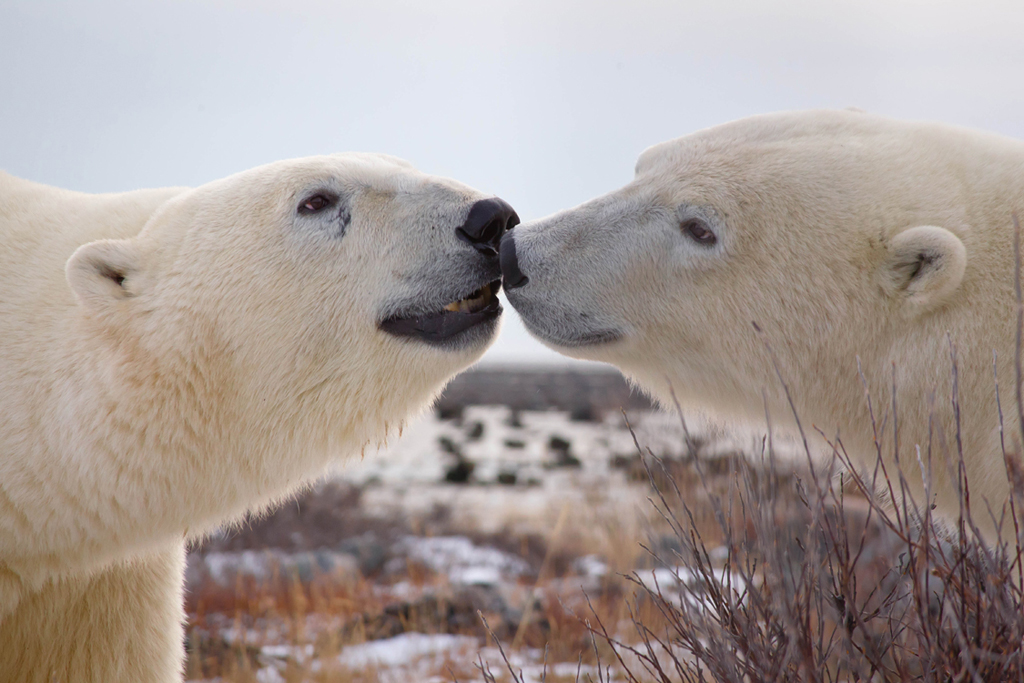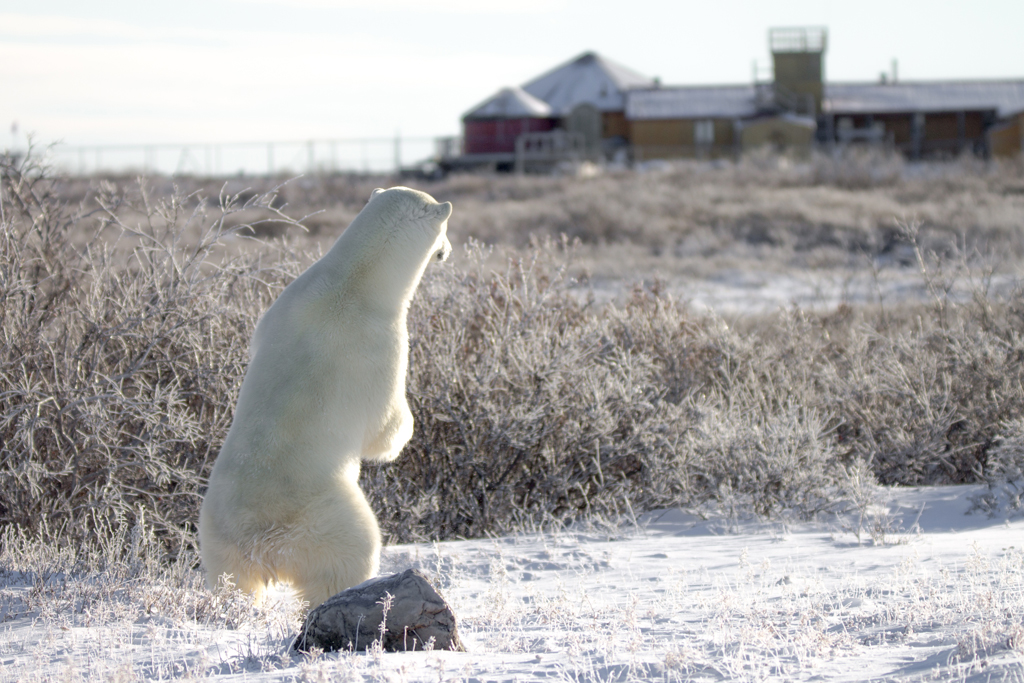Polar Bear Week takes place from November 4-10 this year, at the same time that the polar bears are gathering on the shores of Hudson Bay waiting for the ice to form. It’s a week in which people from all over the world make extra efforts to reduce their impact on the environment, while also creating awareness about global warming, especially with regards to polar bears.
According to scientists, global warming has had a dramatic influence on the reduction of the Arctic sea ice. This means more open water for steadily longer periods and less time on the ice for the polar bears to hunt seals, the main component of their diet. Polar bears not only need the sea ice to maintain their high dietary requirements, they also use it for traveling, socializing and finding mates. Some studies indicate that less time on the ice leads to weight loss and physical deterioration in polar bears.
A YouTube search for “Arctic ice melting” provides numerous satellite images taken over a period of years that clearly show there is substantially less ice in the Arctic now than there was 30 years ago, and that the ice is also forming later and breaking up earlier in the spring than it did in the past.
Utilizing less energy produced by fossil fuels could slow and even stop global warming by reducing carbon emissions, helping to save the sea ice that polar bears need for efficient hunting. Without the ice, polar bears will decline in range and numbers, making them vulnerable to extinction in the future.
Polar bears come ashore when the ice melts, and they do not eat a lot during their time on land. We’ve been observing their behavior for over three decades on our summer and fall polar bear tours and safaris. If they happen to come across a beluga whale or caribou carcass, they will indulge themselves, but they typically do not expend much energy pursuing live prey during their time on land.
Many people are already reducing energy consumption in their homes, schools and workplaces, turning thermostats down, driving less, using more energy-efficient devices, and simply being kinder to the environment through reducing, reusing and recycling, which is something we’ve been practicing at our Arctic ecolodges for over 30 years. The awareness created through Polar Bear Week attracts more supporters and creates new conservationists every year.
Theories that correlate declining polar bear populations with a reduction in Arctic sea ice make sense, as do those stating that limiting the use of carbon-based fuels can slow global warming. At Churchill Wild, we do everything we can at our polar bear lodges to minimize our footprint on the environment including:
- efficient use of solar power
- strict recycling and composting policies
- biodegradable cleaning products and in-room toiletries
- minimum use of motorized vehicles (hence our walking with polar bears adventures!)
- energy efficient appliances and lights
- locally foraged and harvested food whenever possible
- educating and informing guests about polar bears and their environment
Will our efforts make a difference? We think they will, which is why we’ve been practicing the above ever since we began officially hosting guests at the Churchill Wild polar bear lodges 25 years ago. It’s part of our lifestyle and our guests also appreciate our efforts.
Polar bears have helped us throughout our working lives, in one of the most pristine environments on the planet. The very least we can do is be kind to the earth by minimizing our impact on the environment.
That’s not only good for the polar bears, it’s good for all of us.












